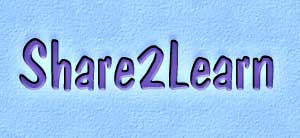 |
Ideas for Science and Exploration |
 |
Ideas for Science and Exploration |
"Invitations" Center
~ from Kathy EgawaOne of the most interesting areas that I added to a 1st, 1-2, and 1-3rd grade classroom was the "invitations" area. And one of the cheapest and most inviting sets of materials was old electronic devices that no longer worked, i.e. radios, clocks, VCRs, etc. I brought in a few tools and this set of "junk" along with a few related books and the kids went to town. Boy, did we learn a lot. I remember when my student teacher innocently asked, "what's that thing?" and the kids replied, "THIS is an air compressor!" All kids were guaranteed a time at the invitations area daily.
Take Apart Center
~ from Susan Nations
Co-author of Primary Literacy Centers; Making Reading and Writing STICK and So Much Stuff, So Little Space Organizing the Learner-Centered ClassroomOne of my favorite "stations" when I taught first grade was what we called the "Take Apart Center". Parents donated old toasters, VCR's, radios, and other small appliances. I supplied the center with safety goggles, screwdrivers, and other tools to take apart these gadgets. When I could find diagrams of the appliance I would add it to the center. The kids would occasionally take pieces and put them back together to make strange
configurations. They would write about their "new" gadget and its uses. Occasionally we even took pictures of their creations and posted it with their description. It was really a lot of fun and a great way to facilitate language play and manipulation. The only problem I had was determining who got to go and when. We finally had to have a sign up sheet and that took care of the problem.Friction and Measurement
~ from Devon HamnerA favorite activity that I've shared with my kindergarten kids is combining the science lesson of friction with the math of measurement. We have car races. Each child brings a vehicle smaller than their hand. I have a box set up at an angle, one end on the chair, the other on the floor. I have a cut in the box with a cardboard piece that holds two cars in place until I tip it to allow the race to begin. We race on the carpet first, and measure the distances. Then we can graph the results and declare winners. Then we race again on the tile. Kids predict if their vehicles will go longer or shorter distances. They love it, and it is wonderful practice for measuring, counting, graphing, predicting, etc.
Moon Watch
Cut blank paper up into squares approximately four inches by four inches. The size is not important, but you will need twenty-eight pieces of paper. Starting on the night of a full moon, do a month-long moon observation. Each night for twenty-eight days, draw the moon that you see on a blank piece of paper, and write the date at the bottom. Color the moon if you want to. At the end of twenty eight days, put all the pieces of paper in order. Tape them together to make a "moon banner" or staple them into a "Moon Book."
Leaf Observation #1
Collect two leaves from one plant. Make a list on a piece of paper of what is the same and different about the leaves.
Here are some questions to help you in your observation:
- Do the leaves have the same number of veins?
- Are the leaves the same size?
- Do the leaves feel the same when you rub them?
- Are the leaves the same color?
Make up some of your own questions, too!
When you are finished, write this sentence on your paper, and finish it: If I used five leaves instead of two, I think ________________.
Then try it with five!Leaf Observation #2
Collect several different shaped and sized leaves from different plants. You will need at least ten leaves. Sort the leaves in groups where every leaf in the group has something similar. For example, one group might have jagged leaves, another group smooth leaves, and another group long, skinny leaves. See how many different ways you can group the leaves, and write down what you find.
Stump the Adult
This is a great game to play with your mom or dad, to try to outsmart them. To play the game, you need a set of ten objects from your house. You can use ten toy cars, ten video boxes, ten silverware items, ten pieces of jewelry, ten socks, ten toys, ten stuffed animals, ten pens and pencils, or ten of anything you can think of. Then, you will sort those ten objects into two groups. One group will follow a rule, and the other group will not follow the rule. For example, you might have ten toy cars and three of them are red. You could put the three red ones together in one group (follows the rule) and the other seven in another group (doesn't follow the rule). Then you go get your mom or dad and see if they can guess your rule! For fun, play the game about twenty times and keep a tally. Can you outsmart your mom or dad?
Want to see what it looks like? Click here! (Use your 'back' button to return here.)
Thanks for visiting Share2Learn!